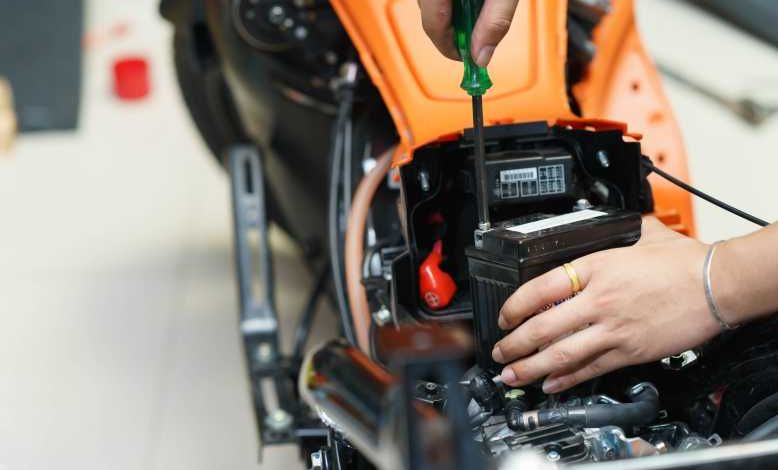You go to your scooter, try to start it, and nothing happens. So what's the problem ? It could be a battery that has just discharged and needs to be recharged, a faulty scooter battery, or some other problem. There are several symptoms of a dead, discharged, or dying scooter battery, ranging from the inability to turn the ignition on, and the battery not charging, to the appearance of cracks, bulges, and discoloration. on the battery, etc. In this article we will show you how to know if the battery of your scooter is out of order.
Signs your scooter battery is dead:
If you are having trouble starting your scooter and suspect it is a battery related issue, there are several symptoms that you can look out for that will point you in that direction. Here are some of the different signs you might notice if you are dealing with a dead or dying scooter battery:
No ignition:
If your battery is completely dead, you will not be able to start the scooter at all. It is therefore crucial to inspect the battery and dispose of it before moving on to troubleshooting other parts of the scooter if you experience this symptom.
The battery does not hold a charge:
If your battery discharges, you recharge and it discharges again almost immediately before stalling, so your scooter battery no longer holds a charge. This battery is not only dead, it is also a bad battery. However, other problems with the scooter can cause loss of charge, such as a faulty alternator.
What you will need:
The horn and headlights turn off:
The battery cannot be recharged: If your battery is discharged after you load it, and it discharges almost immediately before stopping, so you're dealing with a battery that can't be recharged. This battery is not only dead, it is also a bad battery. However, other problems with the scooter can lead to loss of charge, such as a faulty alternator.
What you will need:
Bad voltmeter readings:
These symptoms indicate that the electrical system is losing power and the battery is draining. At this point, the battery is nearly depleted and can usually be charged unless the battery is aging or damaged, or the symptoms are related to the charging system, such as an alternator malfunction.
What you will need:
Broken or corroded battery terminals:
If you think your battery is running out of steam, early indicators of physical damage to examine are the battery terminals. If a scooter's battery terminals are badly corroded, the battery may not work properly, but it may work again if the terminals are cleaned. However, if the battery terminals are damaged in any way, the battery may need to be replaced.
What you will need:
Housing cracks or bulges:
A bulging scooter battery indicates a buildup of chemical gas inside the battery, which is due to electrochemical oxidation (corrosion) that occurs inside the battery. A bulging or cracked scooter battery usually indicates that the battery is overcharged, either because it is faulty or because the charging system is overcharging it.
Leak :
If your battery is leaking acid, this is another indication of severe oxidation inside the battery. If your battery is leaking acid, that's another obvious sign of oxidation inside the battery. When the battery leaks in this way, it is no longer safe to drive and must be replaced. The battery can also leak in sub-zero temperatures, which is already bad for engine batteries.
What you will need:
Discoloration:
Discoloration of a battery can be the result of stains from inside the scooter, but it can also be a sign of the same electrochemical processes that occur with a leaking or swollen battery. Any discoloration in a scooter's battery should be closely examined to determine its source. If the battery begins to change color, it may be out of breath and should be replaced.
Conclusion
Symptoms of a dead or dying scooter battery fall into two broad categories: symptoms you can observe by physically inspecting the battery, and symptoms you experience as a driver (no starting, difficulty in start-up). Most riders notice operational problems before they notice physical damage, unless they take the trouble to inspect their scooter regularly when not riding. This means that most people don't realize they have a flat or dead battery until it is already non-functional or nearly so.
If you experience any operating difficulties, such as a hard start, it is important to stop immediately and inspect the physical condition of your battery for any signs of damage or other issues before moving on. troubleshooting other parts of the scooter. This can save you a lot of hassle and extra expense in the long run.
Learn more about your scooters:
Here is an article that serves as a guide and helps you choose your scooter better before purchasing. For this, we give you the details on the characteristics and the different types of scooter.




